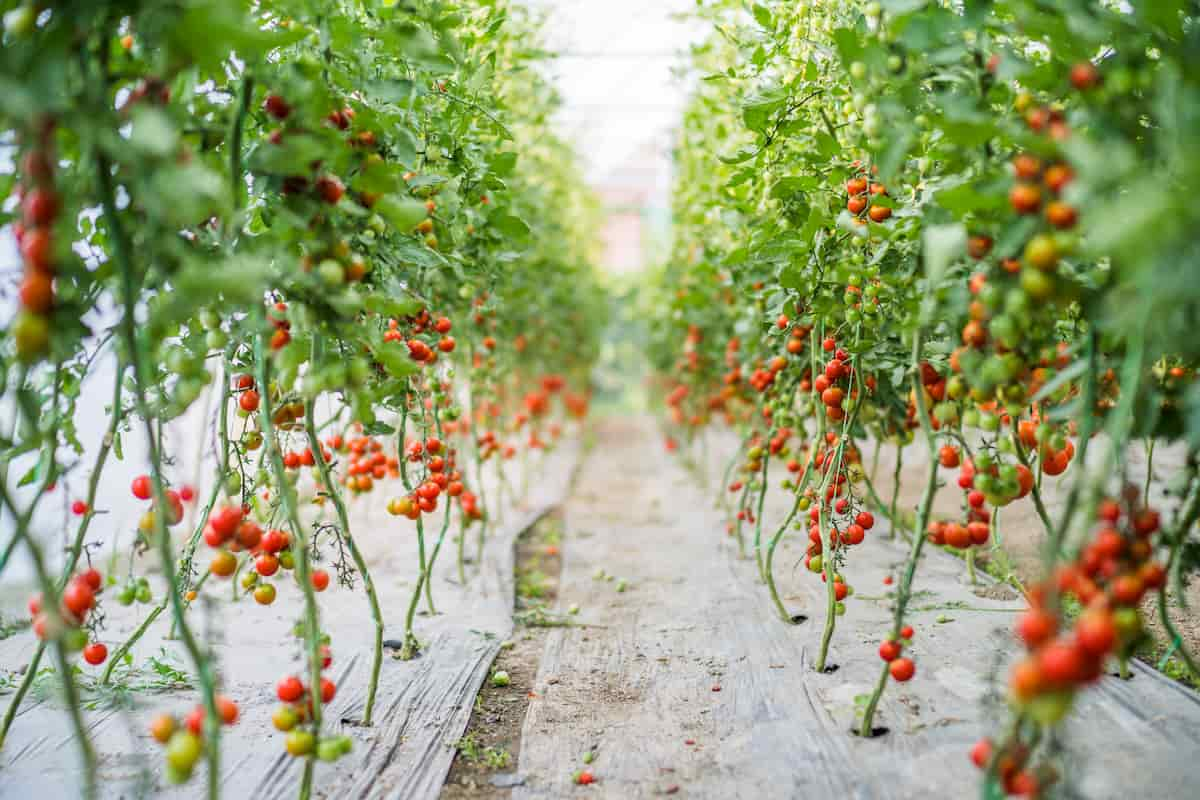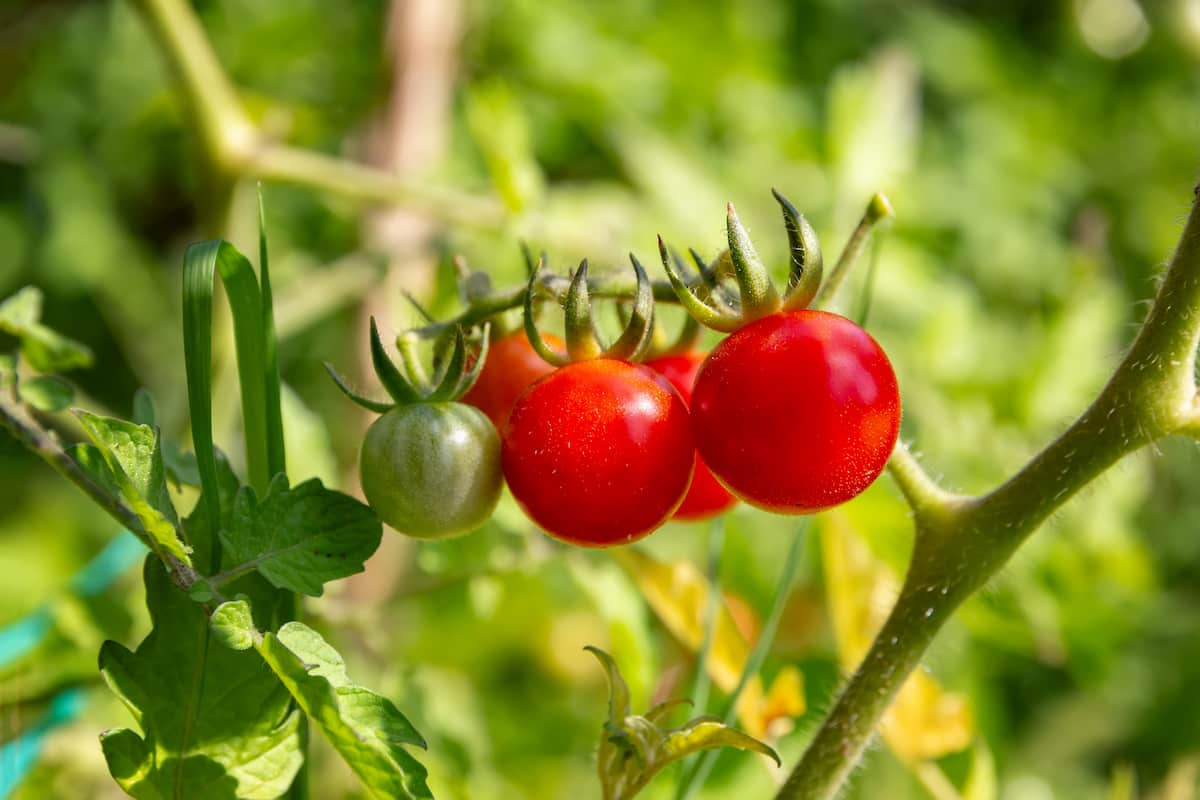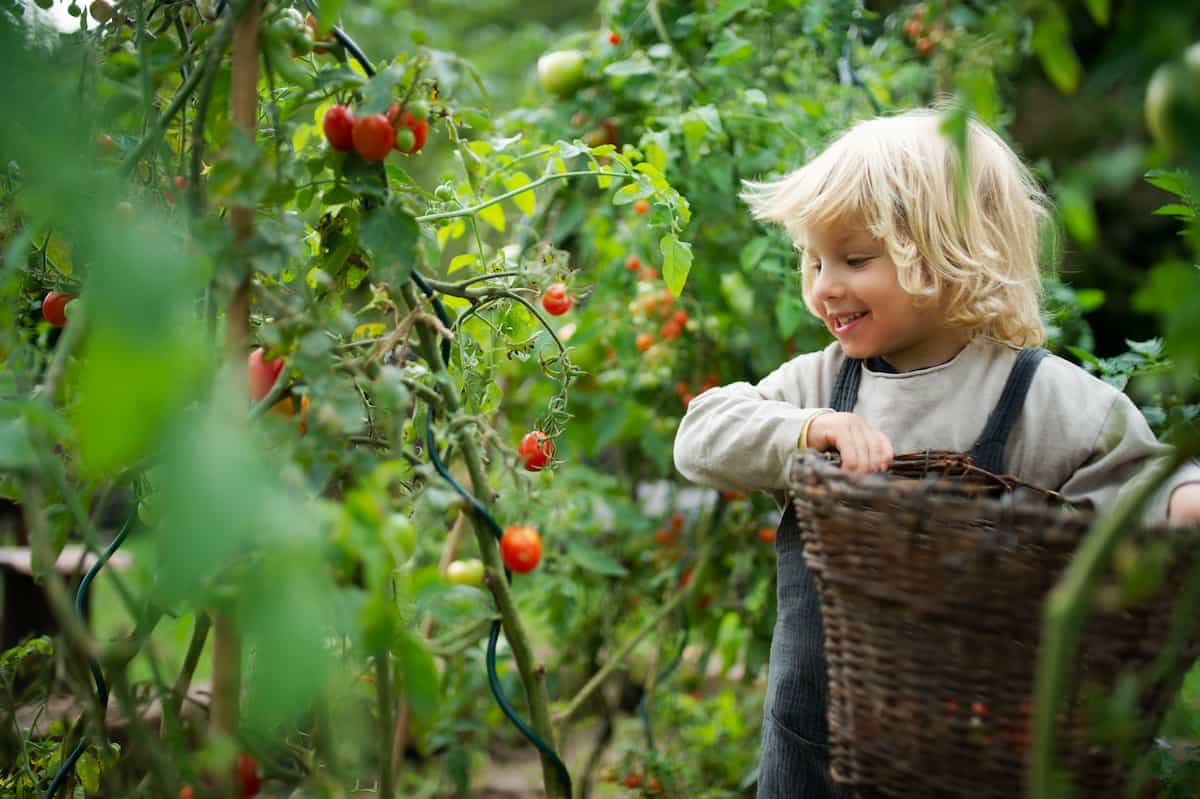Cherry tomatoes (Solanum lycopersicum var. cerasiforme) are a popular variety of tomato with a sweet taste and juicy flavor. They are simple to grow and can be started from seeds, making them an excellent choice for home gardeners who want to experiment with growing their produce. Cherry tomatoes come in various flavors and shapes, each with a unique taste and appearance. Sweet Million, Sun Gold, and Red Cherry are some famous varieties. These varieties are widely available at most nurseries and online seed stores.

Growing cherry tomatoes from seeds have many benefits. Firstly, it lets you choose the variety of cherry tomatoes you want to grow. Growing cherry tomatoes from seeds can be more cost-effective than buying seedlings or established plants. You also have the satisfaction of watching the plants grow from tiny seeds to full-grown plants bearing delicious fruit.
This article looks at the different methods and techniques for growing cherry tomatoes from seeds successfully. We will cover every necessary step for a fruitful cherry tomato crop, from pot preparation and seed preparation to harvest. Therefore, whether you have a backyard garden, an indoor container, or a small balcony, you can produce your cherry tomatoes from seeds.
How to Grow Cherry Tomatoes from Seeds
How to Plant Cherry Tomatoes
Most cherry tomato varieties are indeterminate, yielding fruit all season, and vines continue growing. A tomato cage or other vine support is needed to manage growth.
Potting Mix
Tomatoes need mildly acidic, well-drained, rich, loamy soil. Tomatoes need regular deep watering. Never let the soil dry out. Maintaining soil moisture during fruit growth prevents blossom end rot. Overwatering may damage tomatoes. Since overhead watering spreads tomato maladies like blight, drip irrigation is best. Cherry tomatoes come in red, yellow, orange, and blackish-purple varieties. Cherry tomatoes are ready to pick 50–70 days after planting when their color changes from green to red, orange, purple, or yellow (depending on the variety) and easily detach from their stem.
Growing in a Container or Pot
This is likely a 3-4 inch wide and 4-inch circumference pot. Fill each pot to within half an inch of the top. Place 2-3 cherry tomato seeds in each container. Growing cherry tomatoes in pots require choosing one at least 40-50cm wide and 50 to 65 cm deep with drainage openings. Fill the container with a good potting mix and a layer of gravel for drainage.
Propagation Method and Seed Quality for Cherry Tomatoes
Cherry tomatoes can be propagated by seeds or vegetative propagation methods, such as stem cuttings and layering. However, seeds are the most common and reliable propagation method for cherry tomatoes. Choose fresh, high-quality cherry tomato seeds from a trusted source. Old, low-quality seeds may not germinate or create weak, unhealthy seedlings. In a bowl, add water, and test seed viability. Non-viable seeds float, while viable seeds fall. Avoid extreme temps, moisture, and light to reduce seed viability.
Sowing and Spacing for Cherry Tomatoes
The ideal pH range for sowing cherry tomatoes is between 6.0 and 6.8. Climate and growing factors determine when to sow cherry tomato seeds. This will allow the seedlings to mature before being moved outdoors. Growing factors determine cherry tomato seed rate and spacing. At indoor, plant 2-3 seeds per box 2-3 inches apart. A terrace or backyard planting requires 2-3 seeds per foot and 18-24 inches between plants. Plant 1-2 seeds per pot 12-18 inches apart in containers.
Moisten potting mix in a small pot to sow cherry tomato seeds. Place one or two seeds in a finger or pencil indentation in the soil. Cover the Soil and moist the seeds lightly. Keep the container warm and moist. Give seedlings enough sun and water. Dig a hole slightly bigger than the seedling’s root ball and transplant it outdoors. Refill and water the plant’s soil. Spacing for the plants as above.
In case you missed it: How to Grow Greenhouse Tomatoes: A Step-By-Step Guide for Seed to Harvest

Mulching, Staking, and Pruning for Cherry Tomatoes
Mulching with straw, leaves, or compost conserves moisture, prevents weeds, and regulates soil temperature. Decomposing organic matter releases minerals, improving soil fertility. Cherry tomato plants need help from staking and pruning. Staking keeps plants upright and prevents them from falling over due to fruit weight. Pruning removes suckers and cuts small branches from the main stem.
This helps the plant focus on fruit and flower rather than vegetative growth. Indeterminate cherry tomato varieties need regular pruning to direct nutrients to fruit and flowering, which increases yields and flavor. Cut the sprawling branches a quarter-inch above the main stem. To improve airflow, trim large leaves growing too densely and remove dead, yellowing, or insect- or fungus-infested leaves.
To prevent wilting, flower loss, and fruit cracking, keep the soil moist. Pinching off flowers until the plant is at least two-thirds mature maximizes fruit production. This promotes plant growth rather than early flowering and fruiting. Fungus, mildew, aphids, and mites can be treated with neem oil.
Manure and Fertilizer Applications for Cherry Tomatoes
Cherry tomato plants depend on fertilization. From seedling sprouting, use liquid fertilizer with more phosphate and potassium than nitrogen every two weeks. Potassium helps bloom and fruit, while phosphorus grows roots and cell walls. Too much nitrogen-rich fertilizer produces more leaves and less fruit.
Monitor cherry tomatoes in plants for overwatering, overfertilization, and pests: overwatering and fertilizing cause yellowed, dry leaves. Let the soil dry out between placing and wait a week before planting to avoid this. Mulching keeps the soil wet. Avoid stem rot by leaving mulch a place around the stem base. A tomato cage helps the plant grow evenly and avoids branch breakage.
Disease and Pest Control in Cherry Tomatoes
Cherry tomatoes are susceptible to various pests and diseases, which can significantly decrease output and cause death. Aphids, whiteflies, spider mites, and tomato hornworms are among the most prevalent pests that attack cherry tomatoes. Insecticidal soaps or neem oil can manage these pests because they kill the insects without harming the plant.
Cherry tomato diseases include early blight, late blight, virus disease, and verticillium wilt. These diseases can be controlled with appropriate crop rotation, sufficient plant spacing, and sanitation practices. Also, using disease-resistant tomato varieties and adding fungicides can help prevent these diseases.
Harvesting and Yield of Cherry Tomatoes
Cherry tomatoes are self-pollinating but may require some assistance when grown indoors. Shake the flowers, use a cotton swab or paintbrush, or place a circulation fan near the plant to simulate a summer breeze and assist with pollination. Cherry tomatoes usually produce fruit within 60-80 days. They should be harvested as soon as they ripen for the best flavor and to reduce the weight on the branches.
In case you missed it: Frequently Asked Questions About Tomato Farming

Cherry tomatoes come in different colors, such as red, yellow, orange, or purple, when they ripen. You can keep them fresh by storing them on the kitchen counter or using a storage method like freezing or drying. Growing cherry tomatoes at home or indoors is an easy and fun way to enjoy flavorful tomatoes all year by providing them with the proper growing conditions. On average, Cherry tomatoes produce 150-300 mini tomatoes per plant.
Conclusion
Growing cherry tomatoes from seeds can be a rewarding experience for gardeners, whether indoors, on a terrace, in a backyard, or in containers. You can enjoy a plentiful harvest of flavorful cherry tomatoes by providing proper growing conditions such as light, soil, water, and fertilizer.
- Feed Your Flock for Less: Top 10 Tips to Save on Chicken Feed
- Ultimate Guide to Ossabaw Island Hog: Breeding, Raising, Diet, and Care
- Hatching Answers: The Top 10 Reasons Your Chickens Aren’t Laying Eggs
- Eggs and Economics: Breaking Down the Cost of Raising Backyard Chickens
- Defend Your Greens: Proven Methods to Keep Iguanas Out of Your Garden
- Ultimate Guide to Cinnamon Queen Chicken: A Comprehensive Guide for Beginners
- Ultimate Guide to California Tan Chicken: Breeding, Raising, Diet, Egg-Production and Care
- Ultimate Guide to Marsh Daisy Chicken: Breeding, Raising, Diet, and Care
- 10 Types of Chicken Farming Businesses You Can Start for Profits